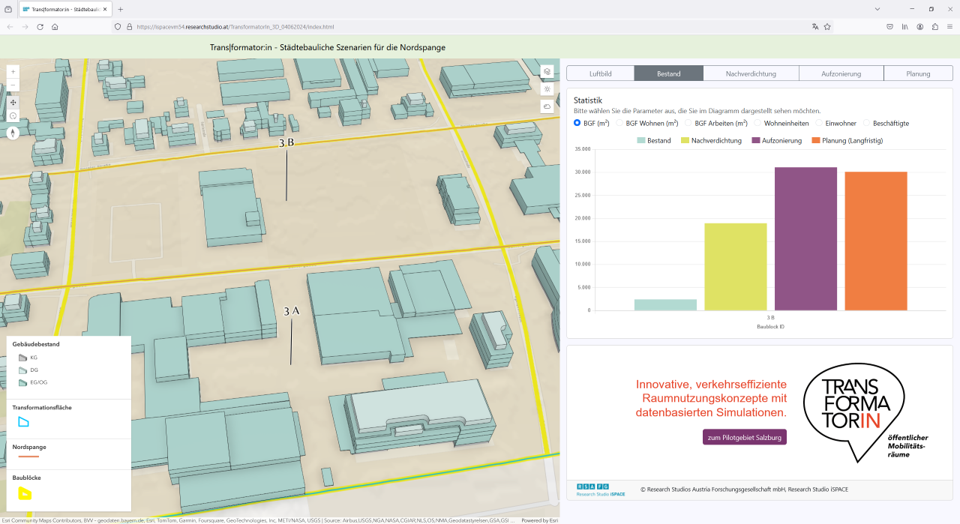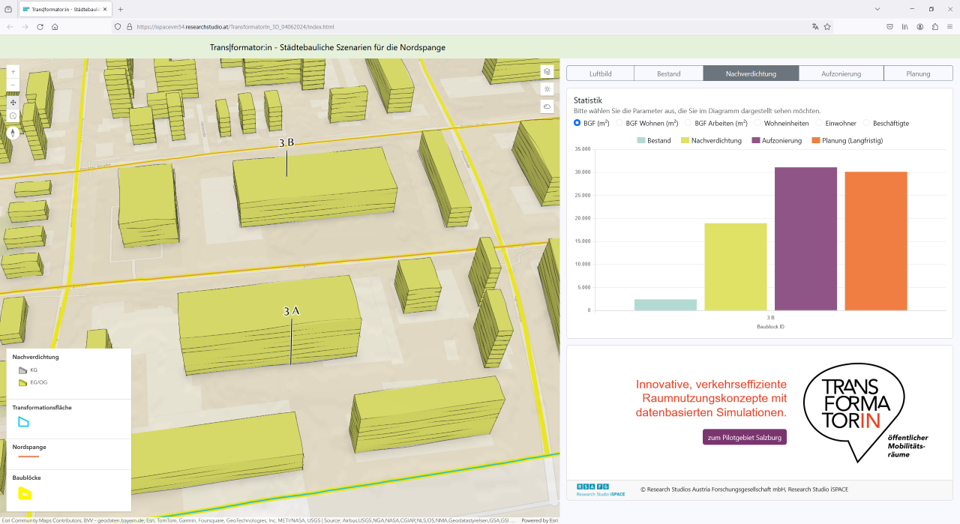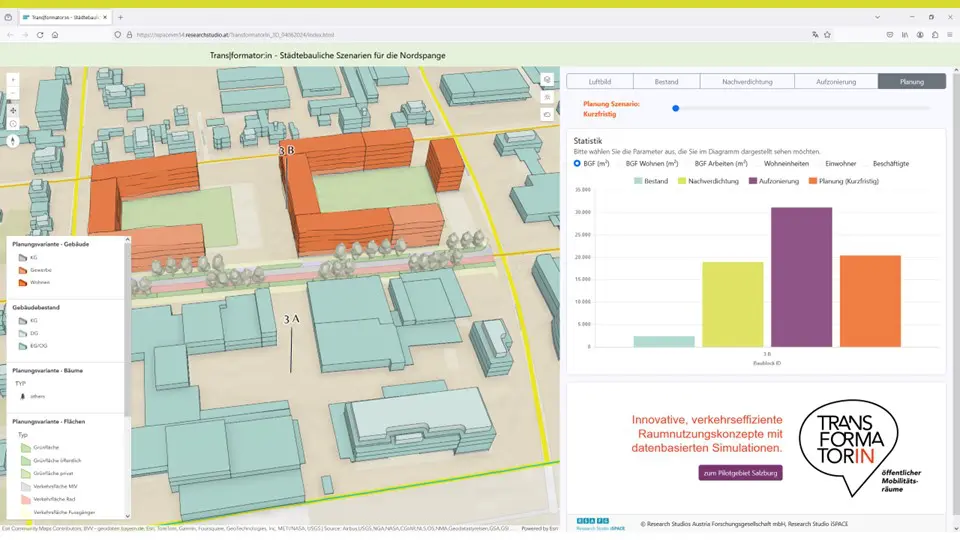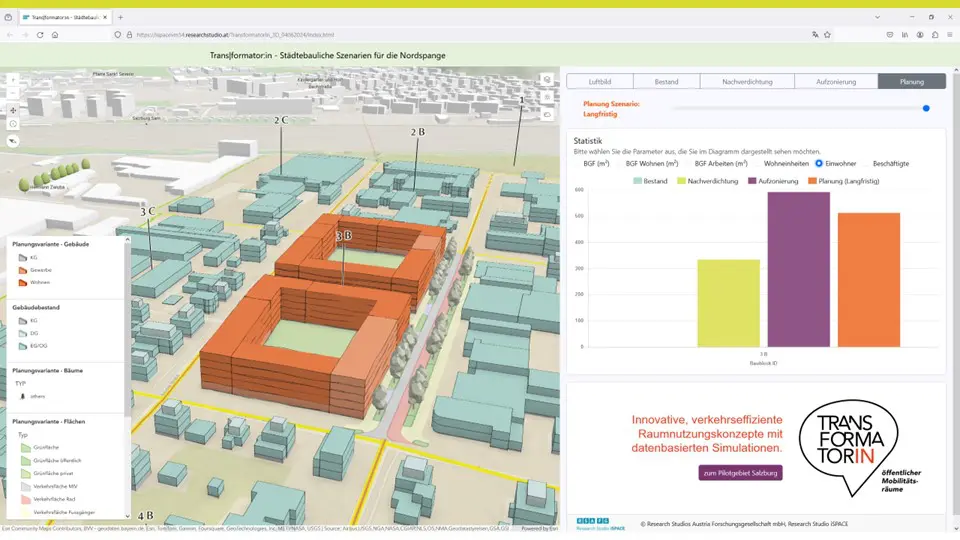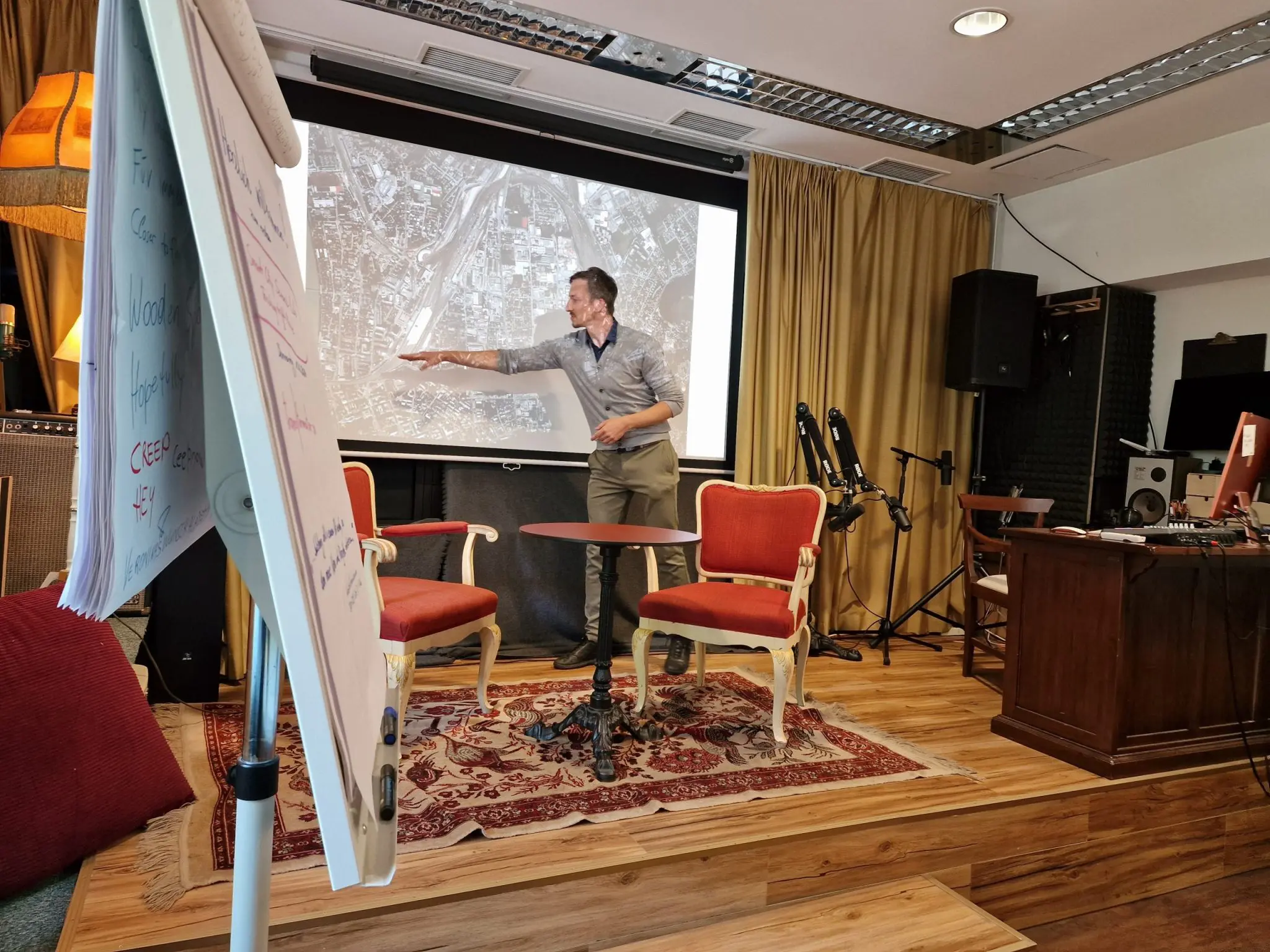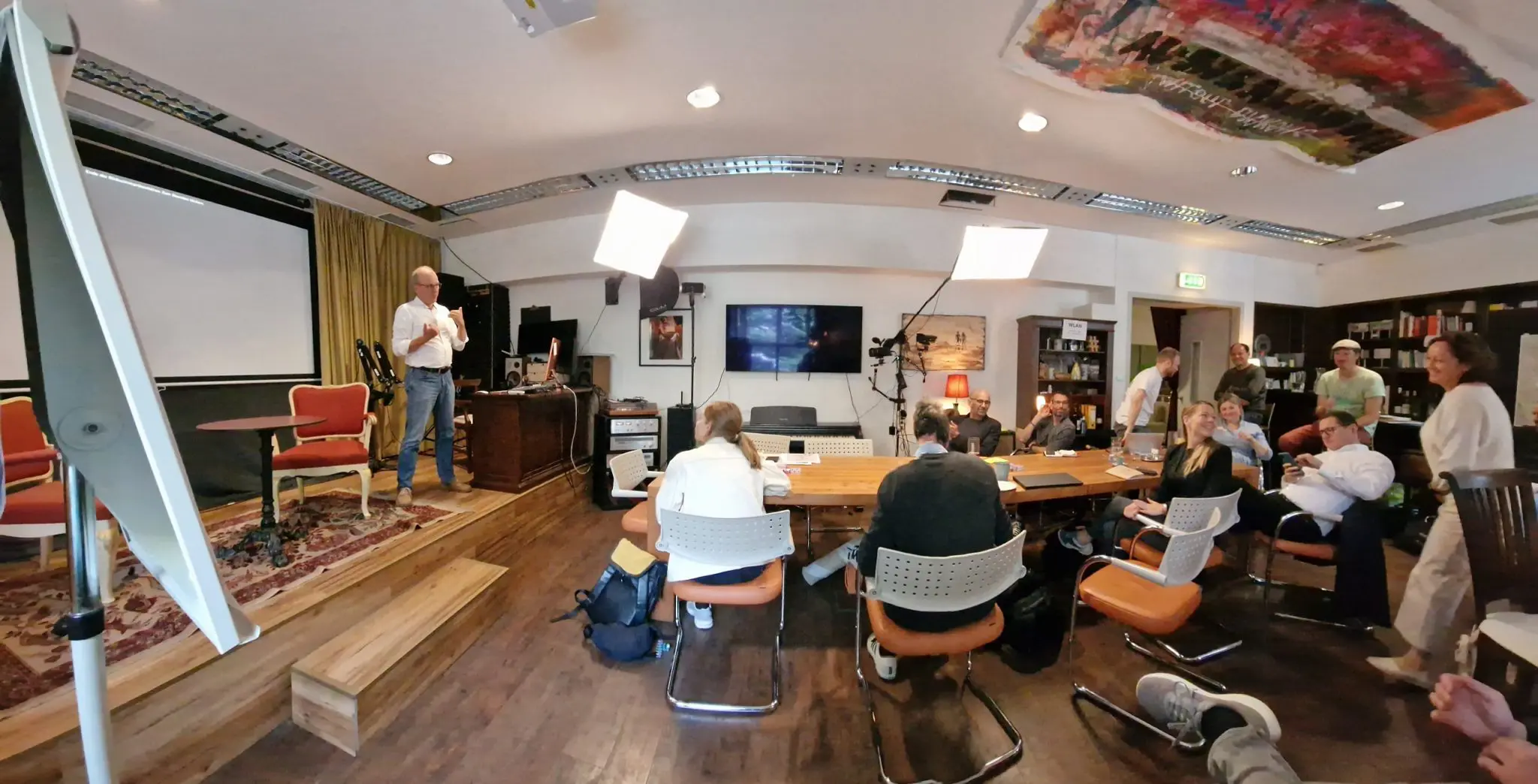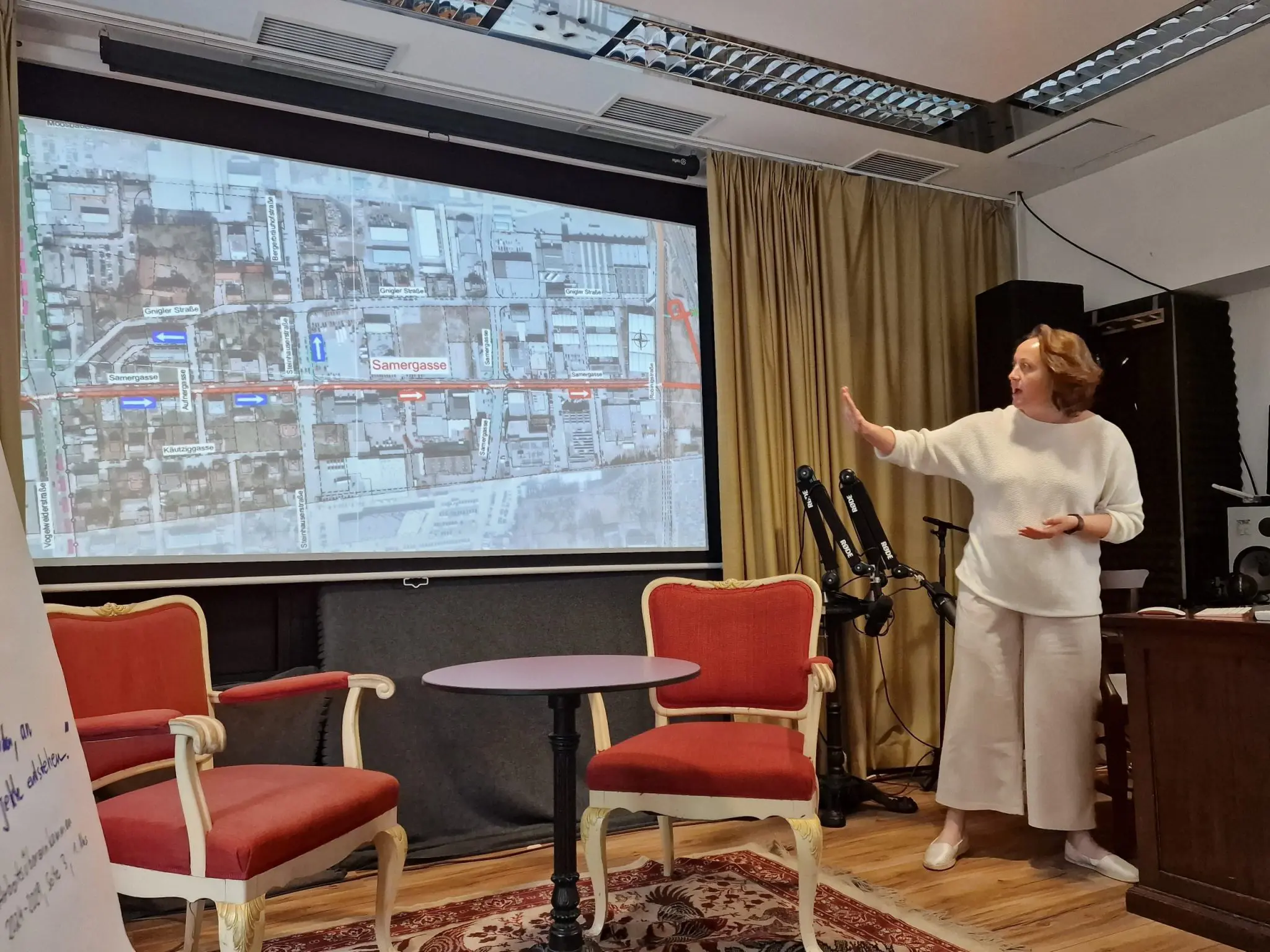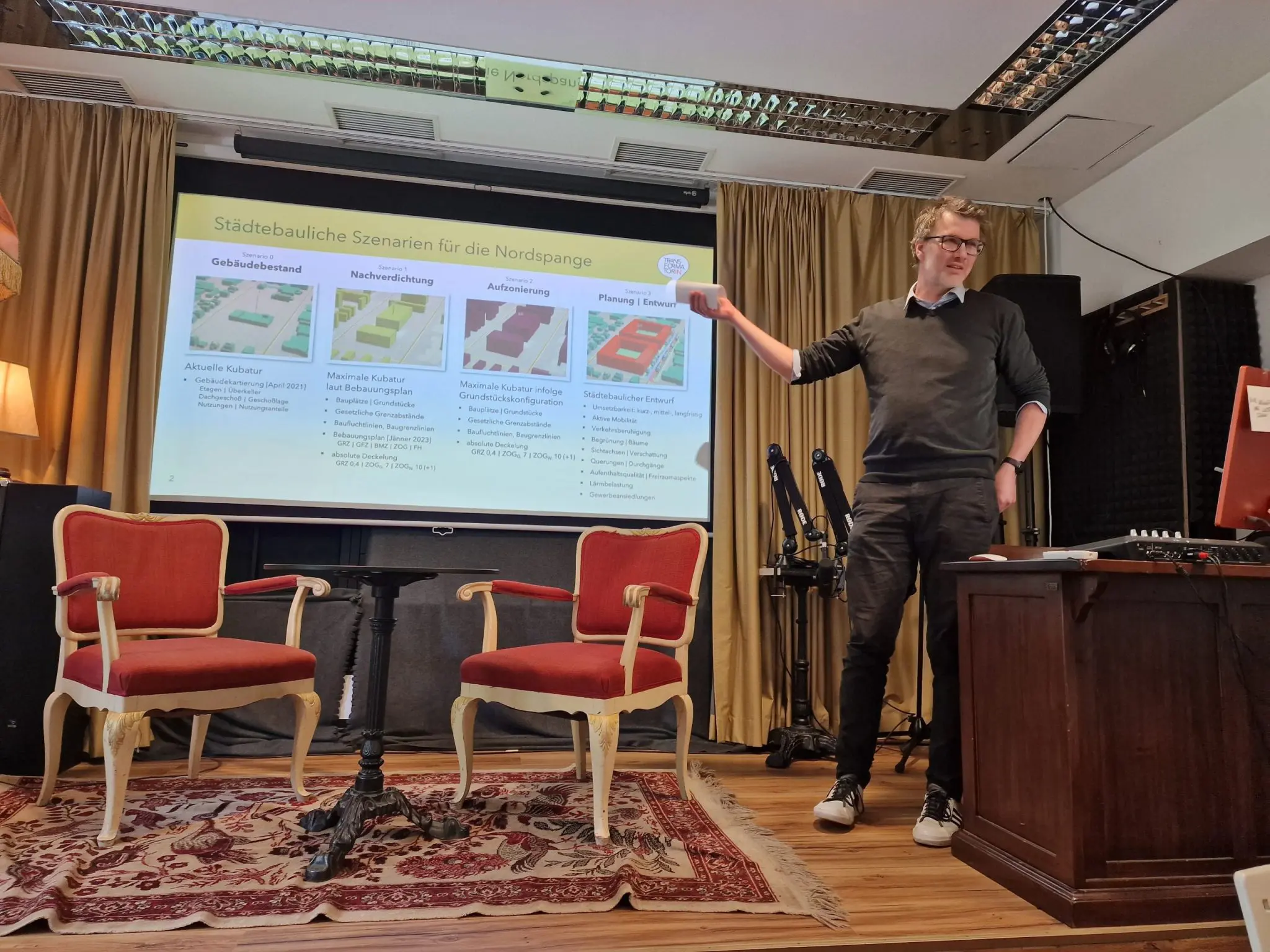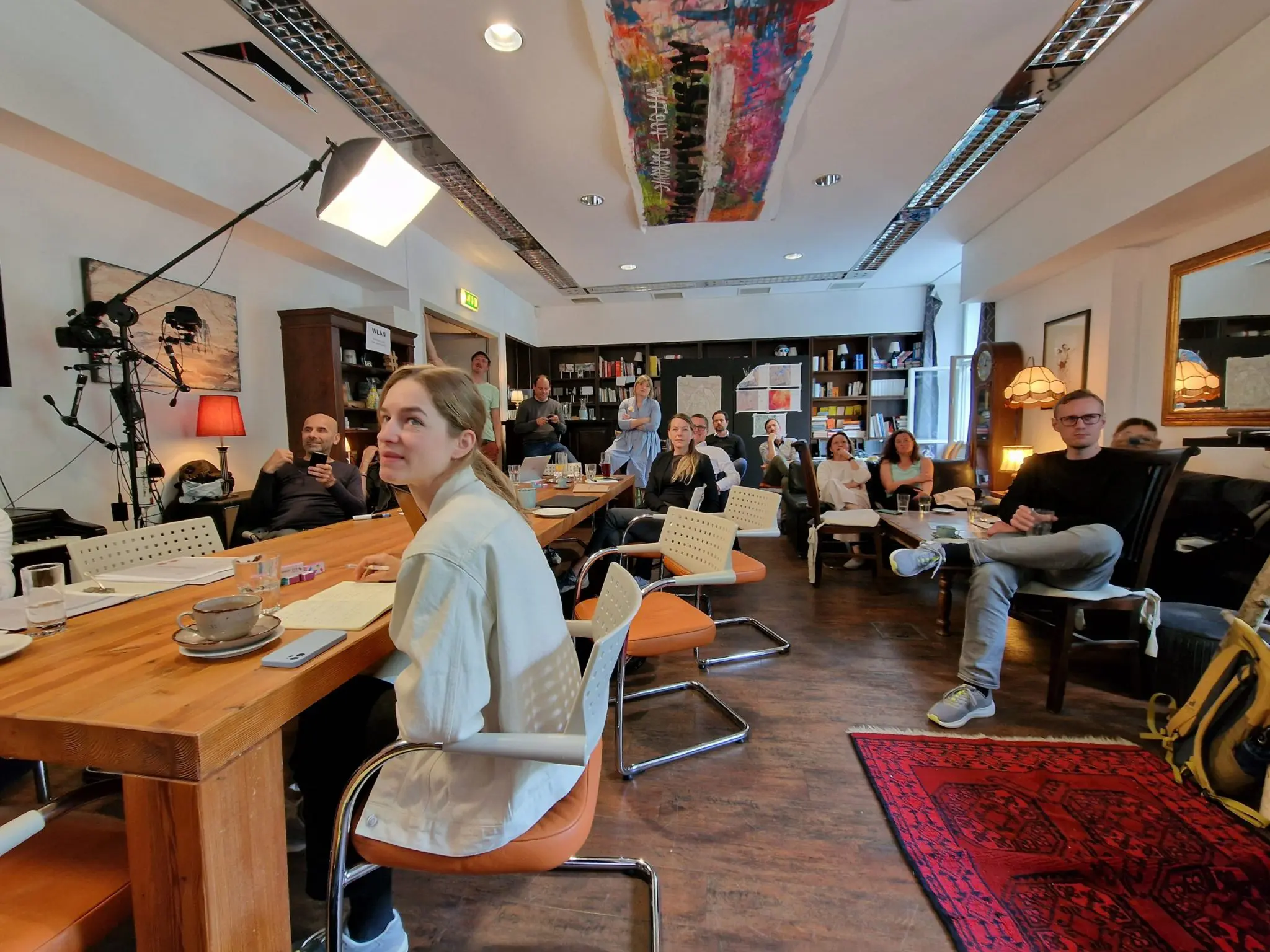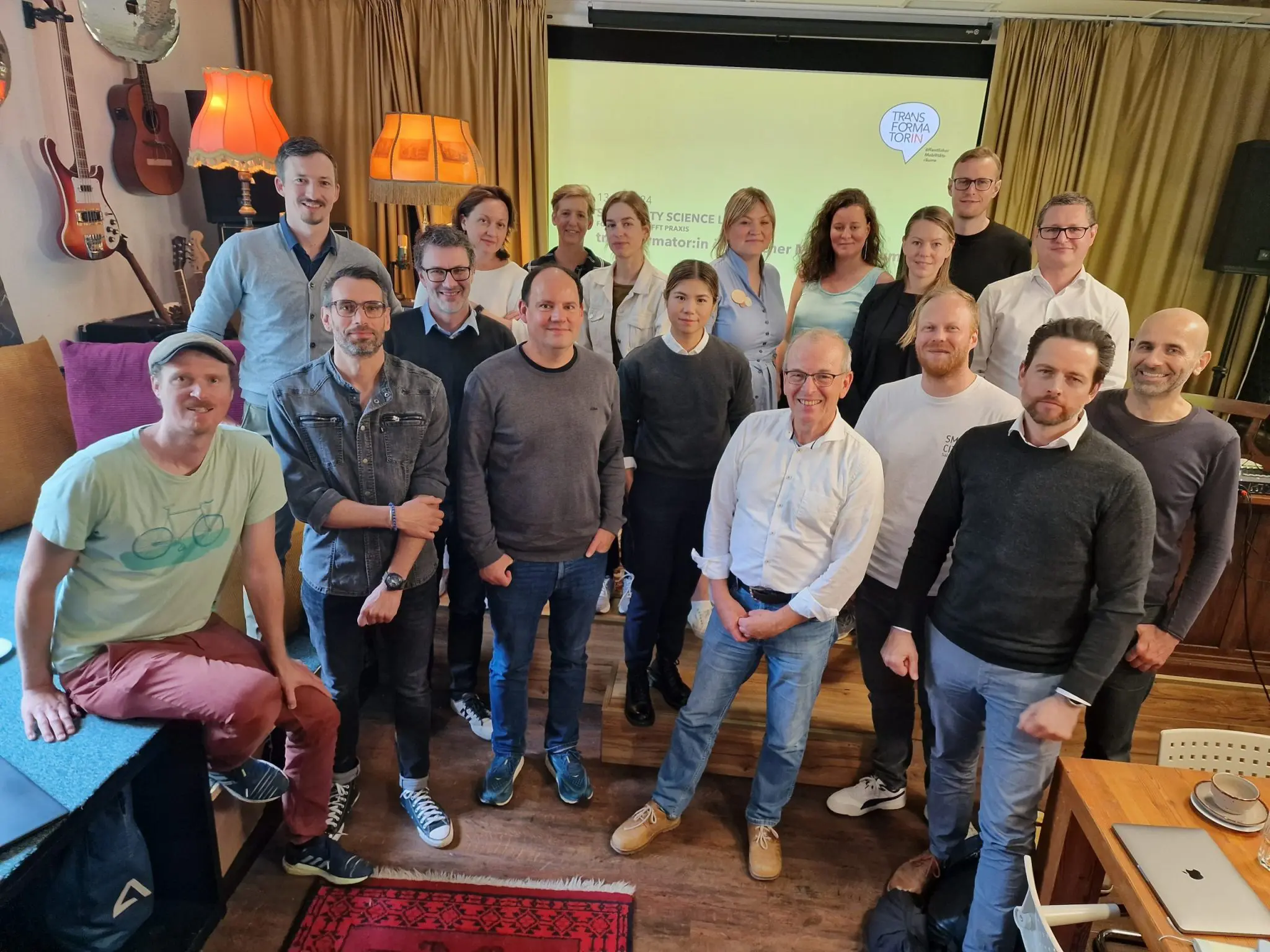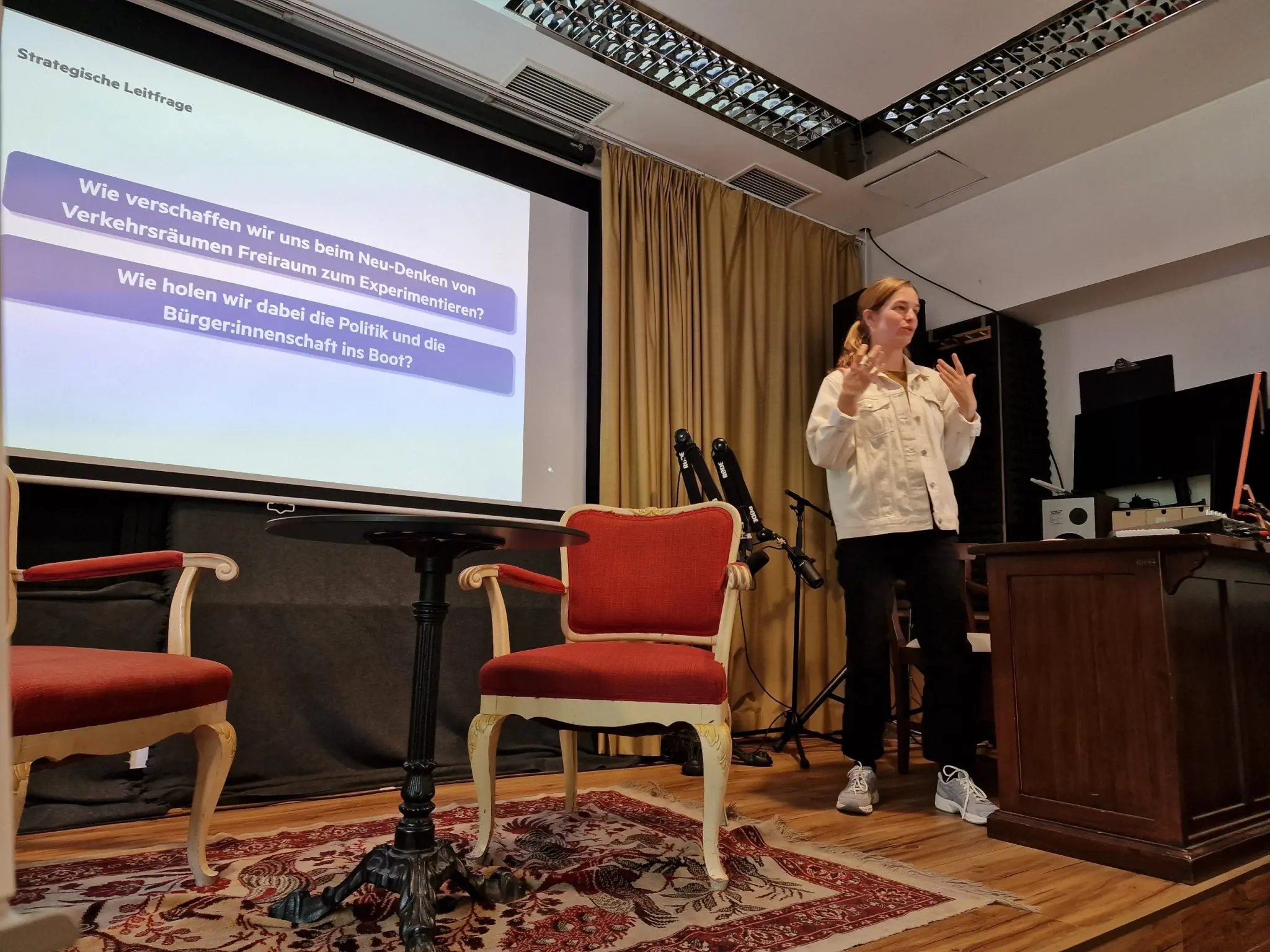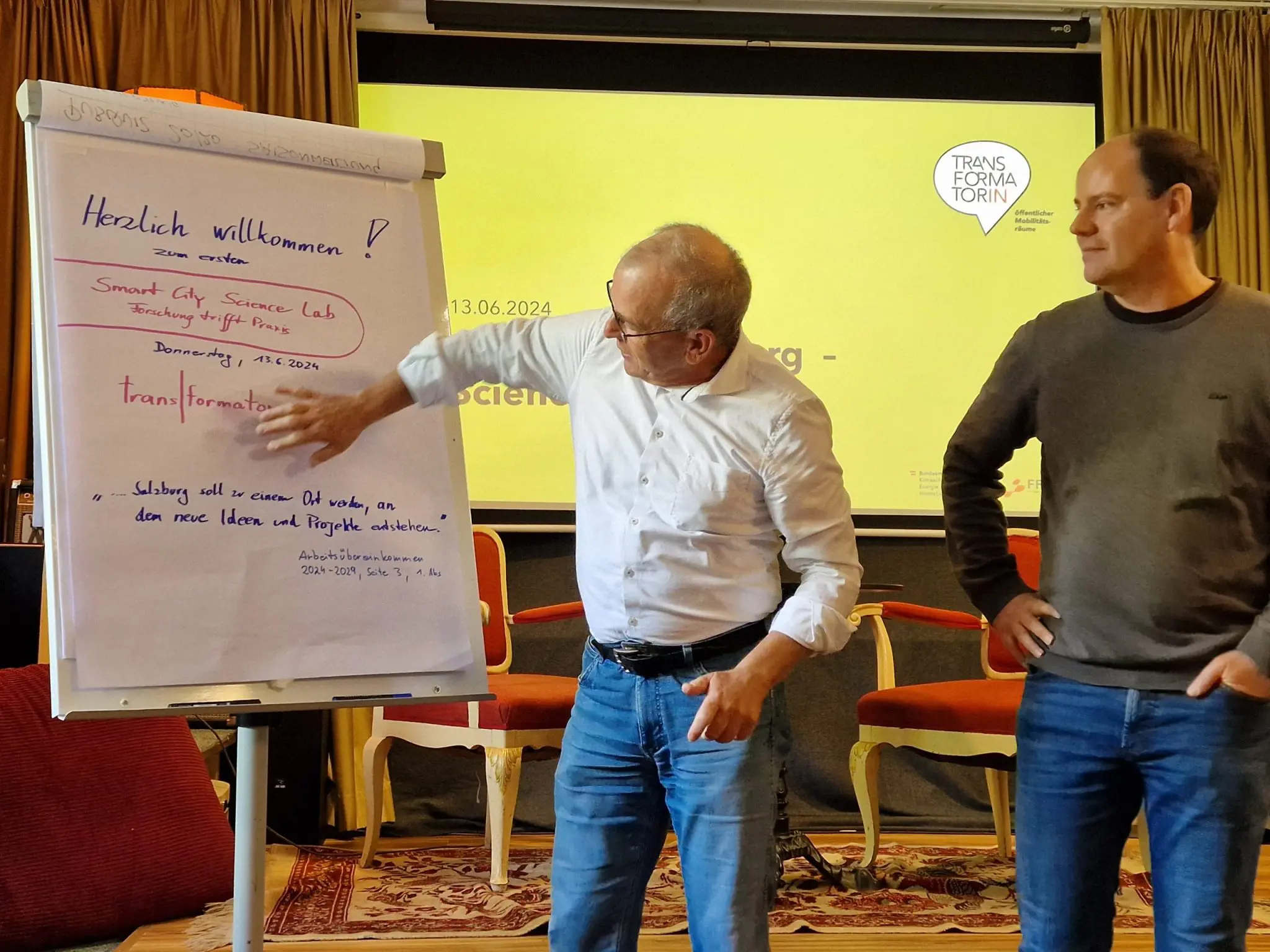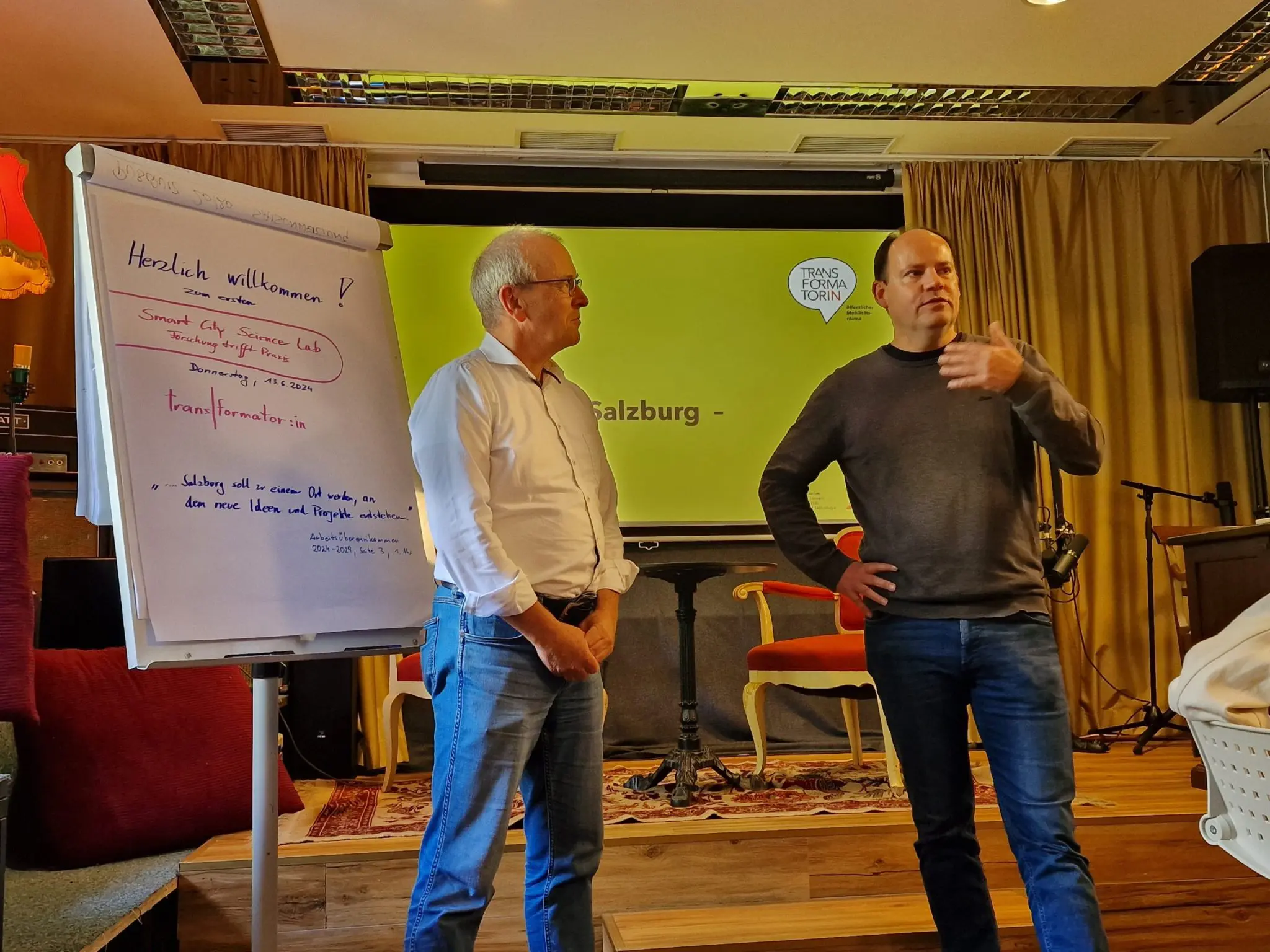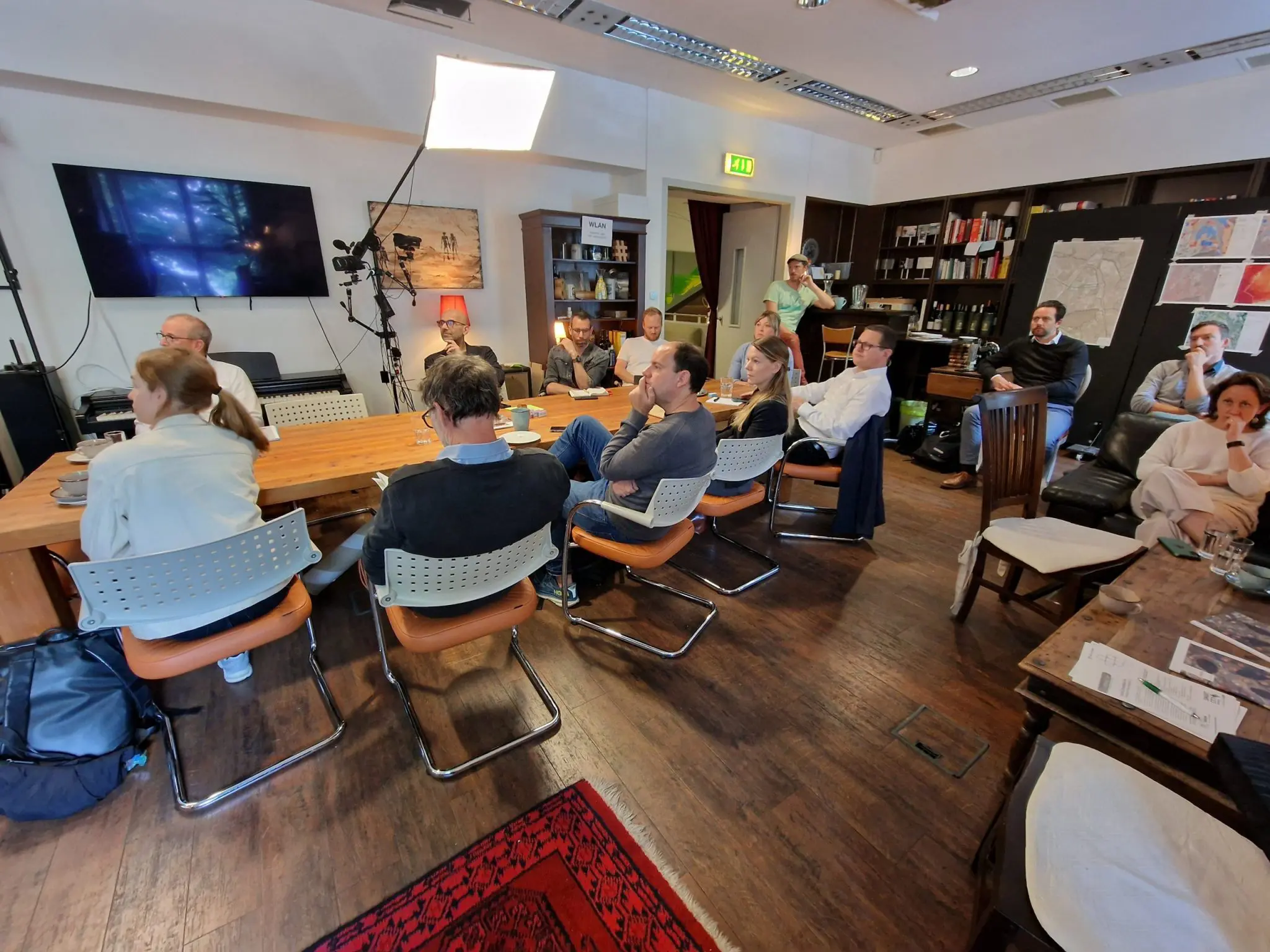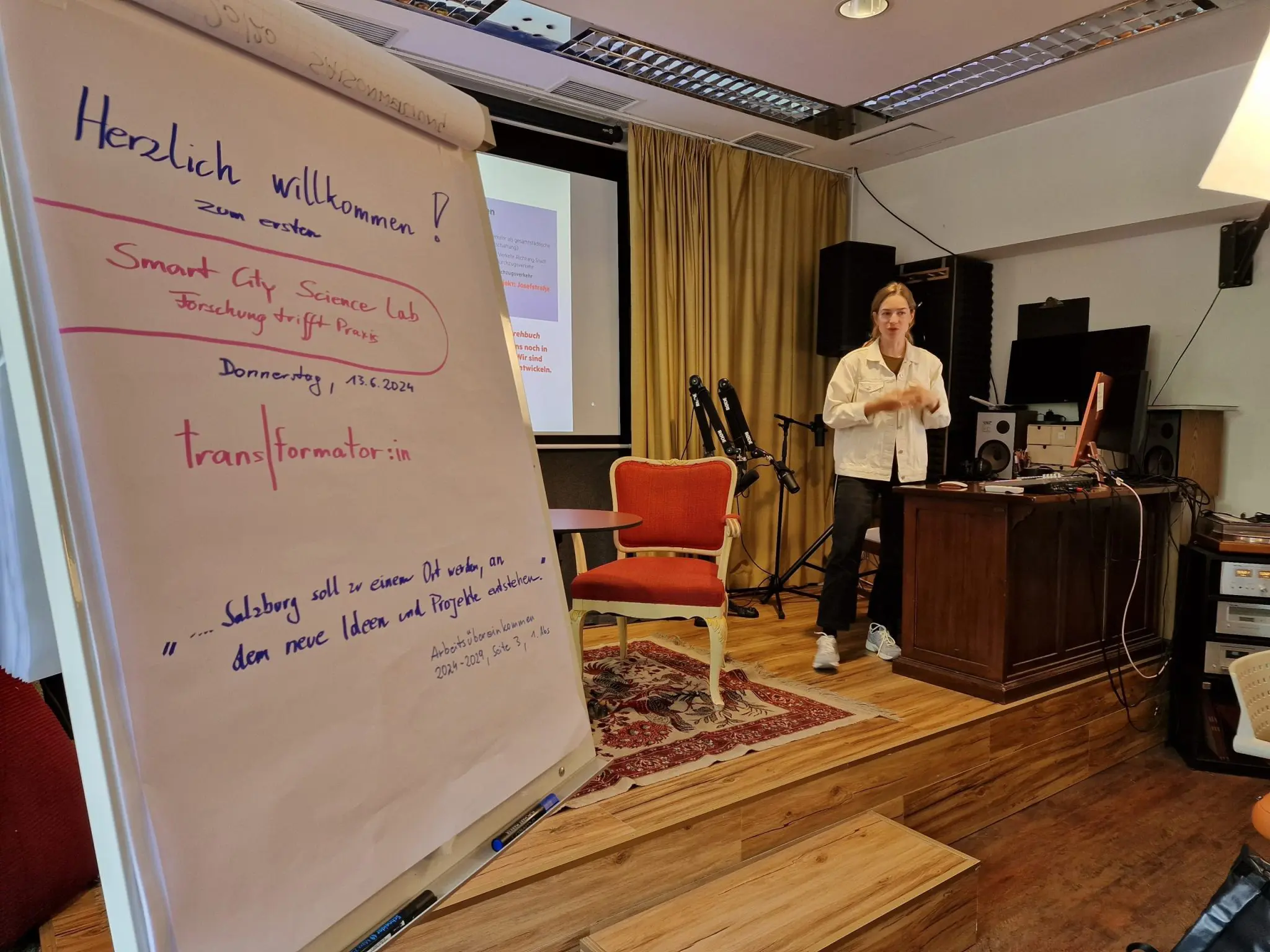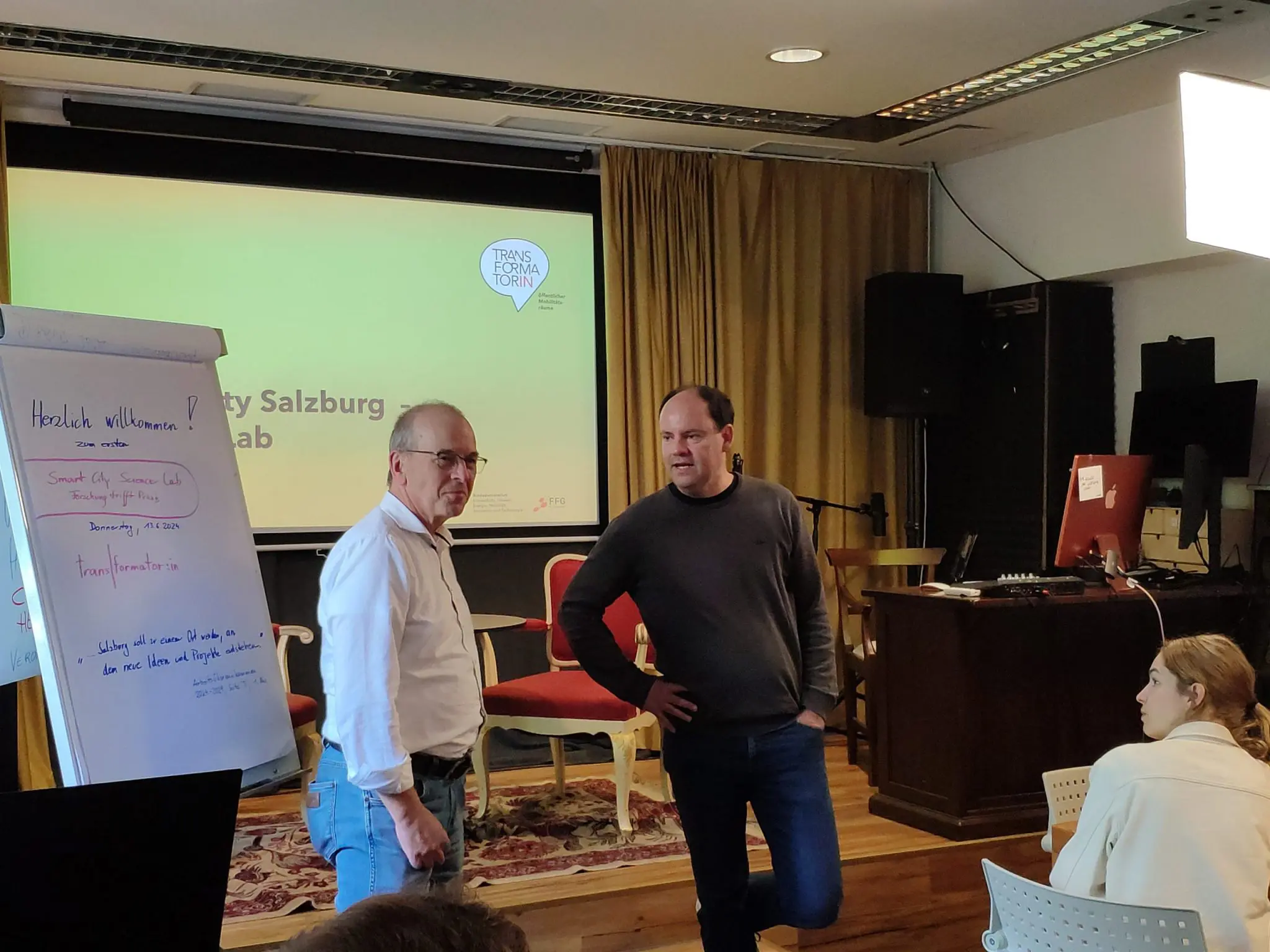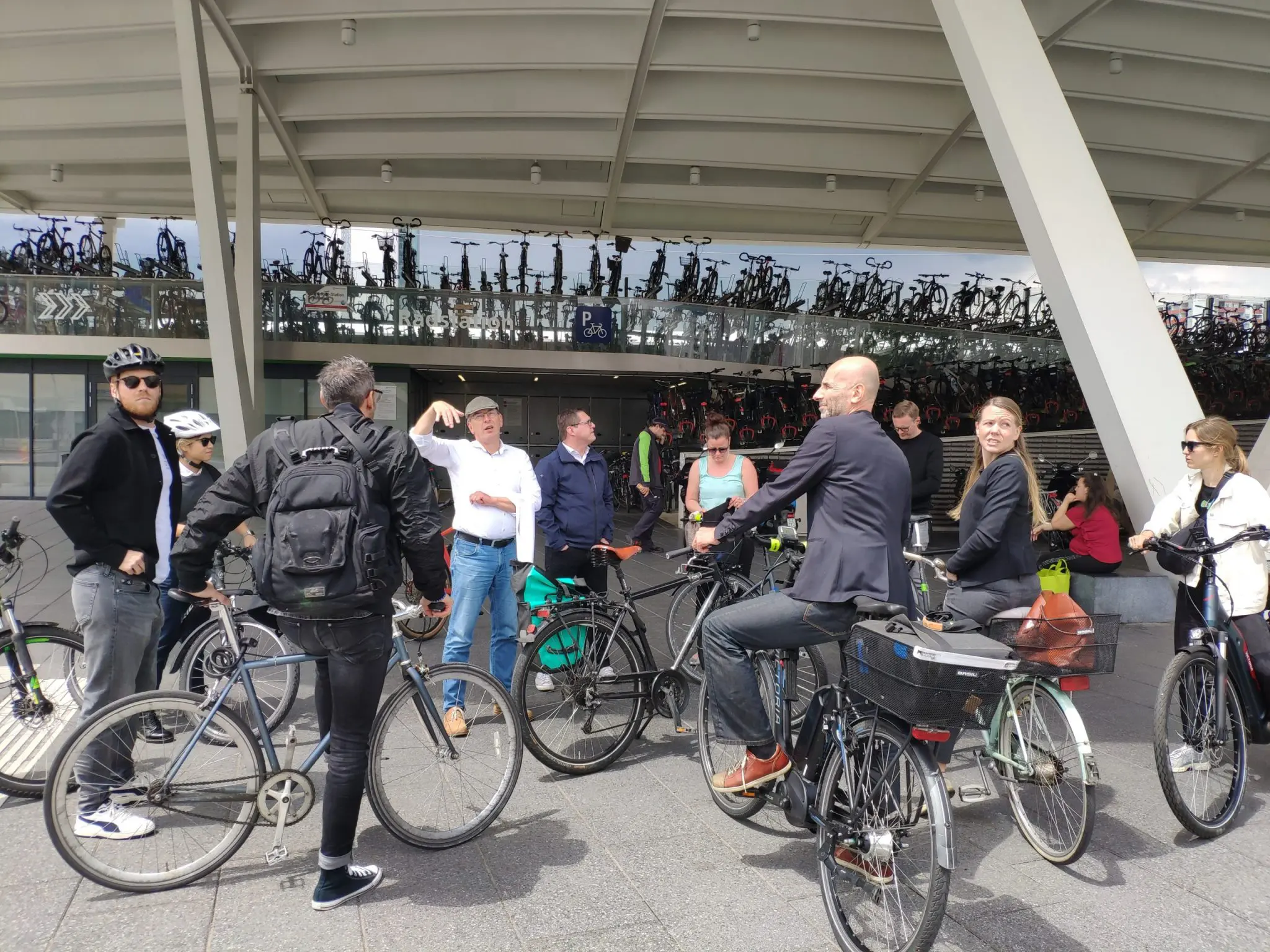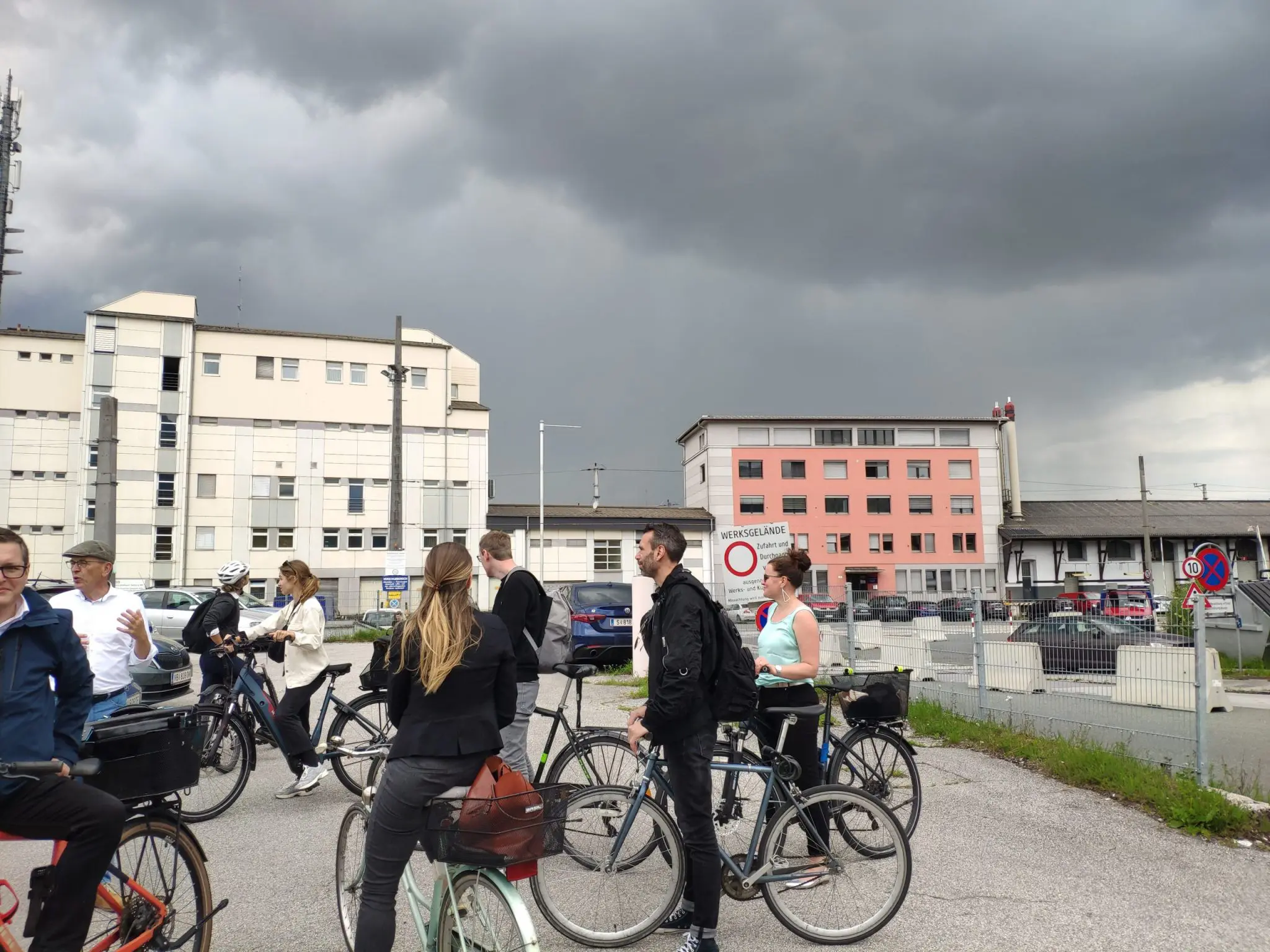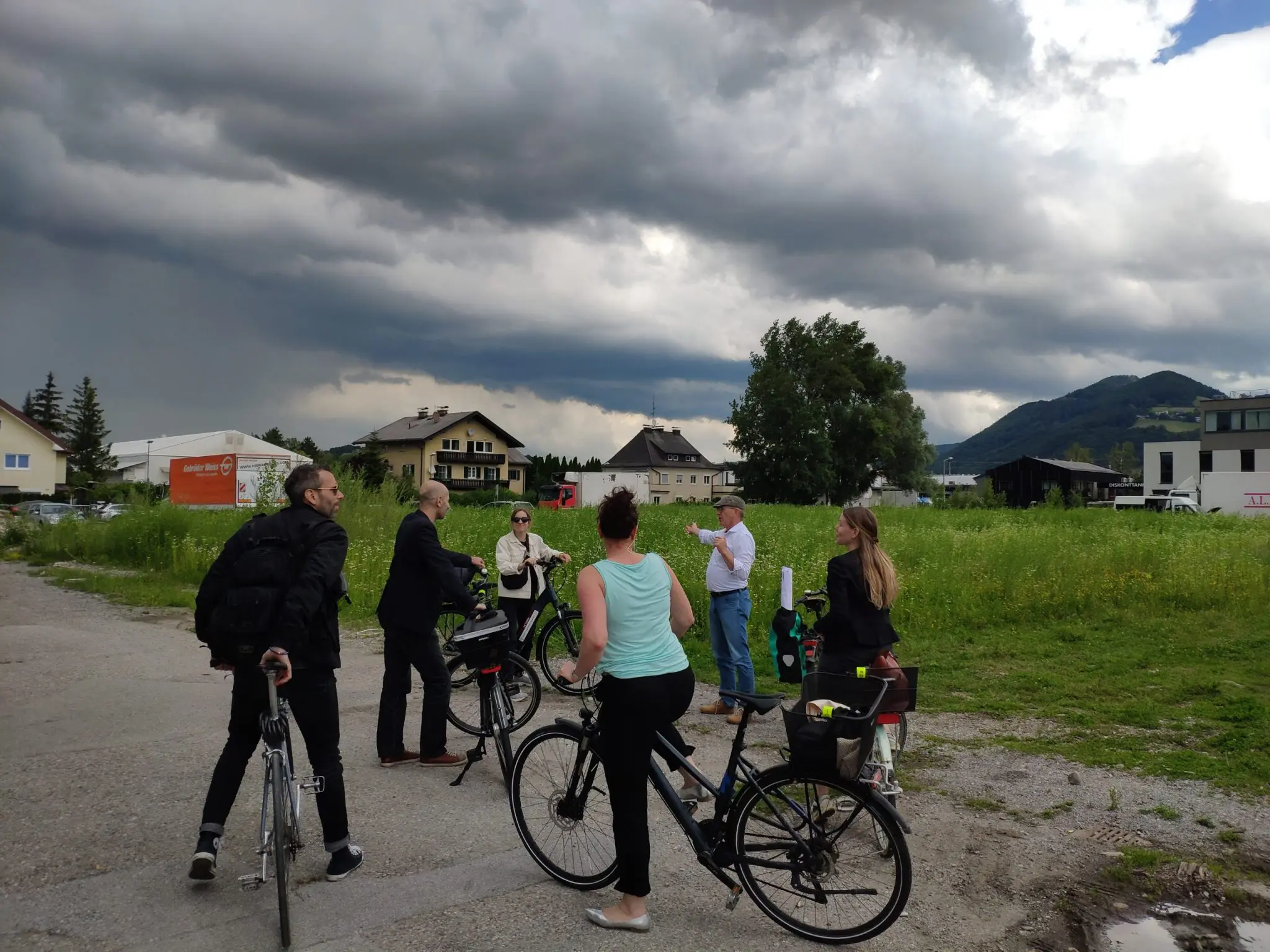Half way there, the project Transformator:in already changed a lot on its way. At a workshop meeting, the project partners from St. Pölten and Salzburg discussed their progress and the next goals.
Anyone who has been out and about in the pilot regions of the FFG lead project Transformator:in over the past two years will have seen first-hand how the environment there is changing. The project partners want to redesign public spaces with the aim of strengthening active forms of mobility, improving the quality of life and creating spaces that are fit for the future.
In Salzburg, the local partners involved presented their project status and also learned about the sister pilot in St. Pölten. Both want to promote axes of active mobility, St. Pölten in the central Josefstraße, Salzburg in the Schallmoos district. Seven other project regions are all working on redesigning their public spaces.
In Salzburg, the Office for Urban Planning and Transport and the iSPACE studio of RSA FG are driving the Schallmoos pilot forward with their geoinformation data. In addition to the core team, the transport association and the mobility laboratory zukunftswege.at are also involved in an advisory capacity. The event was organized by Smart City Salzburg and hosted by the Academy Bar.
Scenarios for Schallmoos
The project in Schallmoos is intended to open up the district with a public transport axis between the regional Lastenstraße and Schwabenwirtsbrücke junctions. The Salzburg district is characterized by various factors: The heterogeneity that makes Schallmoos difficult to grasp, the lack of public transport links and its particular location between railways and main roads, which removes the district from the rest of the city. All of this makes it an interesting pilot region with great development potential.
The iSPACE studio team identified various markers such as location quality based on accessibility, where urban planning can increase building density and which focus area is suitable for closer examination. The iSPACE researchers presented the various urban planning scenarios in an interactive 3D visualization. This shows, for example, how many people currently live and work in an area. And then, in contrast, how these figures develop when various projects are implemented.
Large-scale projects in particular require a constant exchange between partners as well as administration and politics. The consortium also cycled to Schallmoos together to discuss what they had heard live on site. The project will continue for another two years, so many more exchange meetings and developments are still to come.
The first graph shows the existing buildings of a potential development area along the Nordspange, while the second shows theoretical potential for densification. Figure three shows an urban development scenario for the short-term creation of new residential and commercial space and figure four a long-term vision with a significant increase in building density. This prototypical digital twin also enables the simulation of future residents and employees as well as other parameters.
Pictures above: Maria Prchal/RSA FG
Pictures below: Sabine Gadocha/RSA FG


